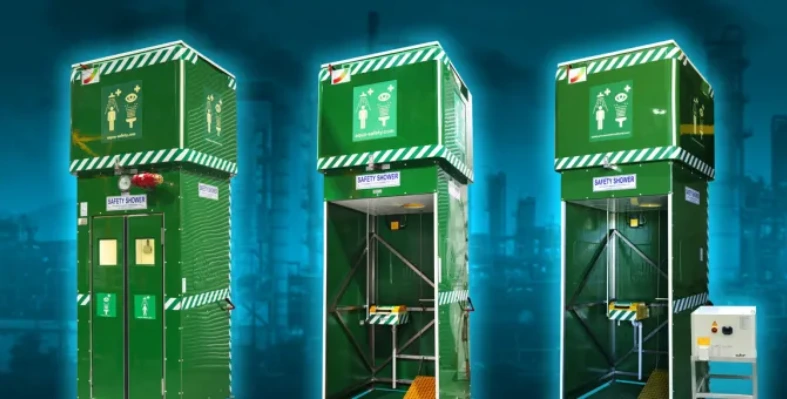Maintaining cool water in safety shower header tanks is essential for effective emergency decontamination. Insulation, shading, cooling systems, and regular monitoring ensure safe, reliable performance even in hot climates. In this short article, Aqua Safety Showers explains why and how.
Safety showers are a critical component of workplace safety, providing immediate decontamination in case of hazardous substance exposure. However, in certain regions or industries with hot climates, maintaining cool water in safety shower header tanks can be a challenge.
High water temperatures can cause discomfort, possible scalding and can further exacerbate injuries.
This is why it is essential to keep water cool in the safety shower header tank at all times of the day and night whilst ensuring optimal functionality and employee well-being during emergencies.
1. Insulation:
Proper insulation is key to minimising heat transfer and maintaining cooler water temperatures in safety shower header tanks. Insulating materials, such as foam or thermal wraps, can be applied to the tanks and associated pipes to create a barrier against external heat sources. This insulation helps preserve the initial water temperature and prevents heat absorption from the surrounding environment.
2. Shade or Shelter:
Placing safety shower header tanks in shaded or sheltered areas can shield them from direct sunlight and excessive heat. By positioning the tanks away from direct exposure to the sun's rays, the water temperature within the tanks can be significantly reduced.
Utilising natural shade or constructing shelters can effectively protect the tanks from heat buildup and help maintain cooler water.
3. Cooling:
Incorporating a water cooler to the safety shower header tank is the most reliable and effective solution for maintaining water temperature. These coolers circulate the water, ensuring the temperature of the water within the tank will not rise above 25°C.
4. Monitoring and Maintenance:
Continuous monitoring of the safety shower system is crucial to identify any potential issues that may affect water temperature and shower operation. Regular inspections, maintenance, and servicing of the unit is essential to ensure their proper function.
Maintaining cool water in safety shower header tanks is vital for ensuring effective emergency decontamination and the well-being of employees. By implementing strategies such as insulation, shade or shelter, cooling systems, temperature regulation, regular water replacement, and vigilant monitoring, organisations can overcome the challenges posed by high ambient temperatures.
These measures ensure that safety showers deliver water at a comfortable temperature, encouraging their proper use during emergencies. By prioritising the cooling of safety shower header tanks, workplaces can enhance their emergency response capabilities, minimise the risk of injury, and promote a culture of safety.

























